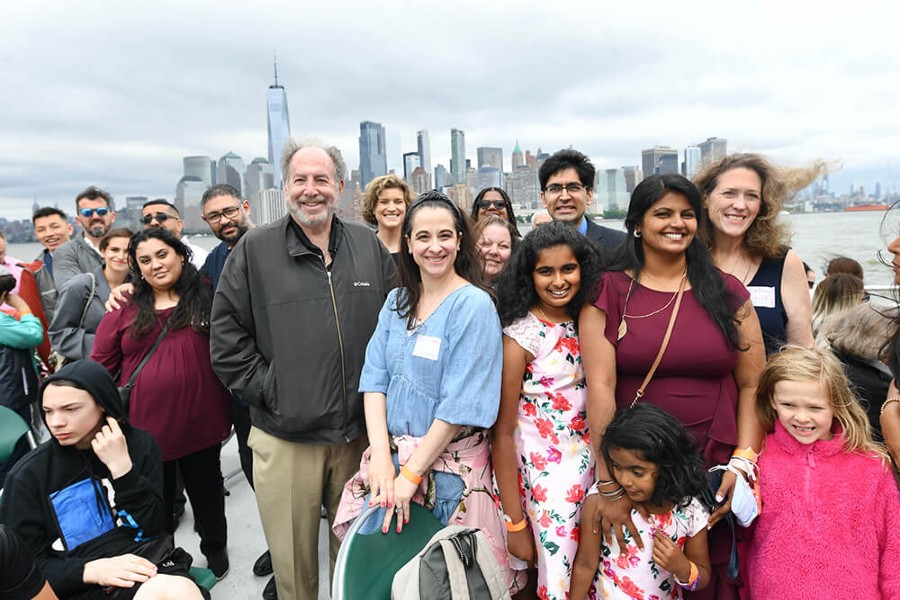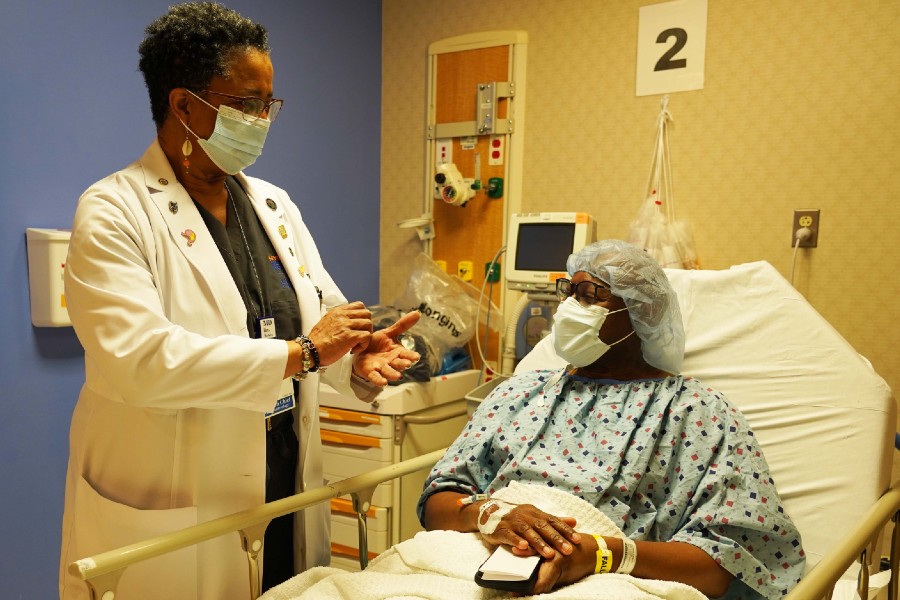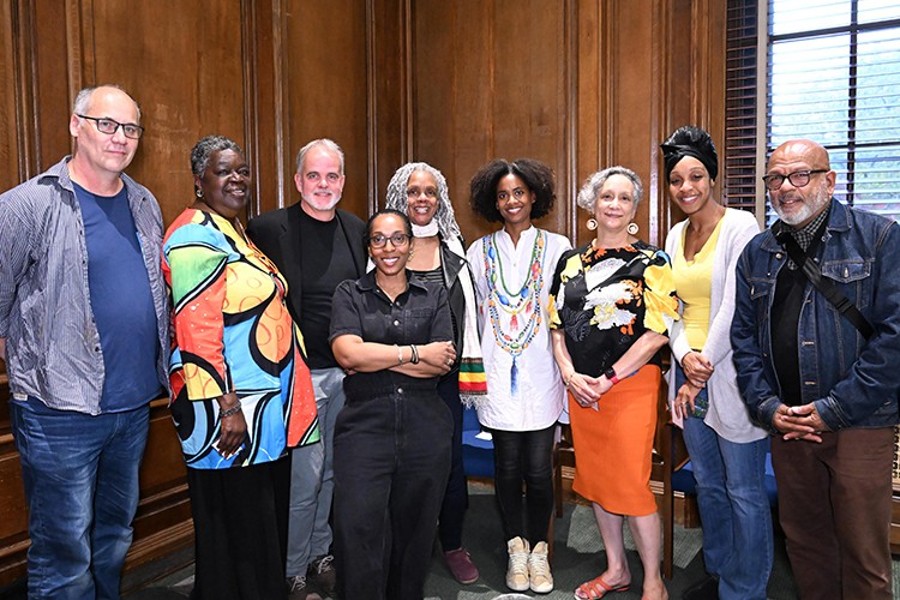 By Michael McQuillan and Michael Kosciol
By Michael McQuillan and Michael Kosciol
The March for Our Lives had a nationwide impact on our thoughts and actions on gun safety issues as hundreds of thousands rallied in New York, Chicago, Las Vegas, Los Angeles, Denver, Miami and even snow-covered Cincinnati, but how many are now active?
 Community Organizing is a method of needs assessment, planning and action that drives ongoing social change efforts on issues as varied as immigration rights, racial justice, LGBTQ equality, police violence and global warming. It’s carried out by professionals from groups throughout the five boroughs, “a person and a mechanism to give voice to the voiceless,” says Reverend Kevin McCall, the National Action Network’s Crisis Director.
Community Organizing is a method of needs assessment, planning and action that drives ongoing social change efforts on issues as varied as immigration rights, racial justice, LGBTQ equality, police violence and global warming. It’s carried out by professionals from groups throughout the five boroughs, “a person and a mechanism to give voice to the voiceless,” says Reverend Kevin McCall, the National Action Network’s Crisis Director.
Brooklyn’s Leaders High School sent a teen team to delve deeper during a week-long field course “Intensive.” Leaders twice yearly halts core classes to expose students, to New York’s cultural, political and historical resources. A Leaders group that Mike McQuillan and Ray Ahmed led last Fall learned “What Makes Protest Effective?” from the Reverend Al Sharpton, the NAACP’s Dr. Hazel Dukes and NYPD Deputy Commissioner Tracie Keesee, “We strive to promote leadership by creating space for our students to authentically lead,” Principal Tom Mullen explains. “This year, many of our students were inspired to organize around the walkout protesting gun violence. This Intensive allows students to build on that momentum and reflect on how their action is connected to those of veteran organizers from a variety of movements. We believe that combining student action with thoughtful reflection in this way leads to real empowerment.”
This Leaders corps, with McQuillan and Michael Kosciol coordinating activities, researched police accountability in Harlem, climate justice in Sunset Park, economic equity and immigration rights in Bushwick — at the National Action Network’s House of Justice, Uprose and Make the Road New York, respectively. Neighborhood walks with veteran organizers’ methods displayed followed each site’s internal discussions.
“A lot of what we do is posting up flyers, talking to strangers. It’s about energy, relating to people by connecting your story to theirs,” said Uprose’s Ting Ting Fu. “Everything we do comes from the community with bottom-up organizing. We do policy research on the issues they give us, then work with them to navigate around obstacles to change.” Uprose secured two power plant closings plus truck rerouting from the overhead Gowanus Expressway to reduce asthma rates by improving air quality.

 Uprose designed the environmentally-friendly park near Brooklyn’s Bush Terminal, pressured City Hall for the 25 miles per hour speed limit along Fourth Avenue, created medians to ease slow-moving elders’ street crossings, planted trees, and encouraged restaurants to serve healthy foods. “One thing we know how to do is survive. If there’s a problem we can fix it,” said Ting Ting. “People on the affluent Upper East Side might call their butler. They have wealth but they don’t have our tools. This is our pillar of strength.”
Uprose designed the environmentally-friendly park near Brooklyn’s Bush Terminal, pressured City Hall for the 25 miles per hour speed limit along Fourth Avenue, created medians to ease slow-moving elders’ street crossings, planted trees, and encouraged restaurants to serve healthy foods. “One thing we know how to do is survive. If there’s a problem we can fix it,” said Ting Ting. “People on the affluent Upper East Side might call their butler. They have wealth but they don’t have our tools. This is our pillar of strength.”
“We are killing the world but we can organize to change something if everyone joins together,” Oriana, a Leaders ninth grader hearing her decided.
When Frida, a classmate, announced at the House of Justice that “we walked out of school (on March 14, 2018) to protest for gun control but I don’t think they heard us,” Sharpton aide Patrice Perry advised that “you follow up by asking your local officials ‘what have you done about gun control?’ They may skirt around it because they don’t want to answer it. So you ask the same question again: ‘so what have you done since the Parkland shooting?’ Then you all ask the same question until you get an answer. Show you’re serious. It takes you to make the change.”
Perry with Reverend McCall related NAN’s role aiding families of police violence victims including the late Saheed Vassell in Crown Heights, who suffered from bipolar disorder, mimicked gun motions with a pipe and was shot to death by police officers a 911 caller summoned. “Put some laws in place to train police to deal with mental health issues to prevent this from happening, “ Perry said. “One day he didn’t take his medication but instead of cops figuring out he was holding a crowbar they just shot up the place killing him and harming several bystanders.”
“We went out there not just to be on the news,” McCall added,“but to help because people don’t know how to respond, to suddenly be in the spotlight while traumatized because they’re emotional after a tragedy.” NAN, with Reverend Sharpton’s guidance as Founder and President, has for 27 years fought injustice in policing, housing and schooling.
The Schomburg Center for African-American History and Culture’s “Black Power” exhibit placed Leaders students’ explorations in context as Tour Guide Doris Lango Leak sketched how church leaders like Reverend Adam Clayton Powell Jr. involved themselves in politics, sponsoring advocacy campaigns while augmenting local social services through congregational work within church facilities.
The Schomburg Center for African-American History and Culture’s “Black Power” exhibit placed Leaders students’ explorations in context as Tour Guide Doris Lango Leak sketched how church leaders like Reverend Adam Clayton Powell Jr. involved themselves in politics, sponsoring advocacy campaigns while augmenting local social services through congregational work within church facilities. Powell himself served in Congress (1945-71), the first New Yorker of African descent to do so. “We’ve always drawn strength from strong Harlem leaders,” Leak said.
Schomburg pictures and artifacts from groundbreaking Black Panther ventures in community nutrition, communication and governance contrasted with FBI Director J. Edgar Hoover’s quoted claim, visible on a library wall, that “The Breakfast for Children Program is the best and most influential activity going for the Black Panthers and as such is potentially the greatest threat to efforts by authorities to neutralize the Black Panthers Program and destroy what it stands for.”
Leak explained the complementary civil rights roles of Dr. King’s Southern Christian Leadership Conference and, in northern cities, Reverend Powell, Malcolm X, Congresswoman Shirley Chisholm, the Black Panthers and the Young Lords. Leak made students aware of the Harlem Renaissance’s towering literary, theatrical and musical artists as practitioners of empowerment and self-expression.
Leak explained the complementary civil rights roles of Dr. King’s Southern Christian Leadership Conference and, in northern cities, Reverend Powell, Malcolm X, Congresswoman Shirley Chisholm, the Black Panthers and the Young Lords. Leak made students aware of the Harlem Renaissance’s towering literary, theatrical and musical artists as practitioners of empowerment and self-expression. “You’re shaped by noble traditions,” Leak told us — an insight for our youth to cherish in a culture of ethnic diversity but electronic convenience where instant gratification weakens sustained concentration.
“All the programs we’ve been to rely on young people,” 15-year old Frida discovered in Bushwick. There Youth Organizers Darian and Adillka described how Make the Road New York rallied outside Senator Chuck Schumer’s Park Slope apartment building after the Democratic Minority Leader in Washington broke his pledge of DACA support.
“ICE did four detention pulls just last week off this block,” said Adilka. “It hit home because that’s where we live, where we chill, where we belong.”
“Organizing for justice has happened for hundreds of years and will go on as long as change doesn’t come,” added Darian. “That’s where you come in,” he told students. “Find places where people are thinking, doing, pondering the same things you are, then understand there’s a network of people with whom to make change.”
These Leaders students hail from Honduras, Mexico, Venezuela, Hong Kong, Russia and Puerto Rico; African-American, Caribbean-American, Italian-American, Yemeni and Pakistani students also populate Leaders. Most will be first in the family to attend college. They can, if they wish, study toward community organizer careers at Hunter College’s Silberman School for Social Work, where Dr. Terry Mizrahi and Elizabeth Rossi sketched its courses for us while Nas and Brigid, graduate students enrolled in the program, described their field placements (at Seafarers International House, a New Jersey Detention Center and the New York Civil Liberties Union)..
“Don’t assume that someone disagrees with you about an issue simply because that person looks different than you,” Mizrahi advised. “Start organizing by speaking with someone else about your experiences,” Rossi added, “the next step, when issues surface, is to ask ‘what will we do about it.”
Mizrahi shared how a Coalition to Save Coney Island Hospital defeated Mayor Rudolph Giuliani’s threat to close it. “People by winning that victory broke through stereotypes that segregated neighborhoods created,” she said. “There were tensions then between Russians and African-Americans. Someone put up a sign: ‘If you don’t want Coney Island Hospital to close, come to a meeting at the Lutheran Church’ and that’s how it started. That’s organizing. Storefront owners said we’ll lose our businesses if we lose the hospital. Organizers help people see that it’s in their interest to get involved.” Mizrahi revealed having grown up in Gravesend, graduating from Lafayette High School, the campus where Leaders High School exists.
In East Harlem in the Sixties, Rossi added, “the Young Lords picked up the garbage and put it on the FDR Drive and blocked traffic” to demand service from the Department of Sanitation. Organizing is about all of your life, not just about school.”
Rossi, a Hunter Social Work graduate, now its Center For Community Organizing administrator, worked at Rikers Island teaching Cop Watch and Know Your Rights workshops. “Policies are made by adults reflecting racism and sexism — dress codes, for example. Who gets to make these decisions?” she asked. “How do we get to have our say? Sometimes an individual protests, but if you can get all the students or your parents involved then the school has to listen, there is the potential for change,” she explained. In East Harlem in the Sixties, Rossi added, “the Young Lords picked up the garbage and put it on the FDR Drive and blocked traffic” to demand service from the Department of Sanitation. Organizing is about all of your life, not just about school.”
“I’ll look at myself differently about self-worth and voice,” teenage Samsara decided. “Getting people to speak out what they have inside can make a bigger more powerful group,” Juan Jose determined. “I want to learn more about Climate Change,” Ana added. “Sometimes our parents show us role models that are powerful people but don’t really care. We’ve met people who do,” Frida declared. Osvaldo was surprised at how many groups are working for change. They and their classmates said all this and more throughout our ninety-minute return train trip to Brooklyn.
“Hopefully, students will come out of this week understanding that they can indeed be agitators for change, with tools to organize the voices in their own communities,”
“We often hear students say that what they do ‘won’t change anything.’ This week exposed them to people addressing real issues, in neighborhoods like theirs, who are making real, lasting changes in their communities,” Mike Kosciol concludes. “Hopefully, students will come out of this week understanding that they can indeed be agitators for change, with tools to organize the voices in their own communities,”
Two adults confronted us as students fanned out for several blocks along Avenue U near school to write local need and resource surveys: “Why aren’t they in the classroom getting their education?” Their tone softened as we described the week-long Intensive: “If only they had that when we were in high school — may we join you?”.
Do you believe in Change?
Michael McQuillan and Michael Kosciol, Teachers, Leaders High School, Brooklyn, New York, May 6, 2018.
Photo credit: 1-2) National Action Network’s Reverend Kevin McCall and Patrice Perry with our group at Harlem’s House of Justice. 3) Mike McGulian and students. 4-5) Make the Road’s Darian and Adilka at the “Know Your Rights With the Police” mural in Bushwick
Become a Harlem Insider!
By submitting this form, you are consenting to receive marketing emails from: Harlem World Magazine, 2521 1/2 west 42nd street, Los Angeles, CA, 90008, https://www.harlemworldmagazine.com. You can revoke your consent to receive emails at any time by using the SafeUnsubscribe® link, found at the bottom of every email. Emails are serviced by Constant Contact









